Are you a Quiet Speculation member?
If not, now is a perfect time to join up! Our powerful tools, breaking-news analysis, and exclusive Discord channel will make sure you stay up to date and ahead of the curve.
With the recent release of Magic Origins and preparations for attending my first Pro Tour in Vancouver, Modern has unfortunately taken a backseat to Standard testing for me recently. This pains me greatly, as moving from the extremely mana-efficient, decision intensive, role-switching matches of Grixis Control in favor of clunky, barbaric Abzan Midrange is similar to trading in a surgeon’s scalpel for a spiked club; it can get the job done, but it will sure be messy.
[wp_ad_camp_1]
After the Pro Tour, I fully intend to return to streaming and playing Modern full-time, but for now I intend to hold my Modern analysis until I am able to focus my full attention and deliver content and opinions that I know are of quality (or close to it). With that said, I asked readers at the end of my previous article and viewers of my stream for questions, so let’s get to the mailbag!
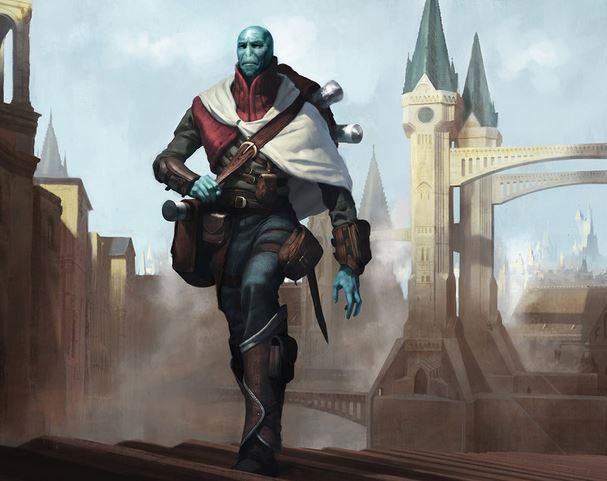
Roland F. Rivera Santiago: “I’d love to see your take on Modern Goblins once you have access to Origins. I think it’s a tribe that could really shine if the proper framework is put together, but there are so many options (Aether Vial Aggro, Tokens + Shared Animosity, Collected Company/Day's Undoing, just to name a few) that it’s hard to tell what that “proper framework” is. Any insight on this issue would be very interesting to me!”
Goblins has popped up here and there in Modern but has never been a real player in the format for as long as I can remember. The incentives to play Goblins over the much stronger Burn (in my mind) are the ability to capitalize on the various tribal synergies present, and the positional advantage gained by playing a deck much more interested in resilient ground attackers that add up damage over time, rather than “one and done” spells hoping to count to 20. In a format full of Feed the Clan or Leyline of Sanctity, for example, Goblins would be a strong alternative to Burn that does similar things (punch face) but attacks from a different angle.
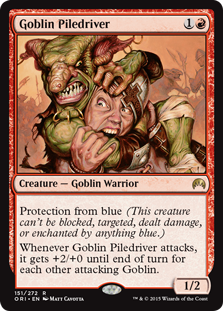 Revisiting Goblins can happen, but to do so we need to analyze what is changing in the format. Currently, this includes the introduction of Goblin Piledriver, and basic metagame shifts as a result of new cards, updated decks and event results. Unless Day's Undoing pans out, the format doesn’t seem like it will shake up that much with the introduction of Magic Origins. For Goblins to “become a thing” it will have to be because of Goblin Piledriver. Evaluating Piledriver is relatively straightforward; it seems to be on-par power level wise with other tribal Goblins (Goblin Rabblemaster, Mogg War Marshal) yet significantly below the upper tier two-drops (Tarmogoyf, Snapcaster Mage). Protection from blue initially seems irrelevant outside of the Fish matchup, but it does make it immune to Snapcaster, Vendilion Clique, Deceiver Exarch, Electrolyze, Vapor Snag and the bounce mode on Cryptic Command. The lack of haste is important, and should be considered when deckbuilding.
Revisiting Goblins can happen, but to do so we need to analyze what is changing in the format. Currently, this includes the introduction of Goblin Piledriver, and basic metagame shifts as a result of new cards, updated decks and event results. Unless Day's Undoing pans out, the format doesn’t seem like it will shake up that much with the introduction of Magic Origins. For Goblins to “become a thing” it will have to be because of Goblin Piledriver. Evaluating Piledriver is relatively straightforward; it seems to be on-par power level wise with other tribal Goblins (Goblin Rabblemaster, Mogg War Marshal) yet significantly below the upper tier two-drops (Tarmogoyf, Snapcaster Mage). Protection from blue initially seems irrelevant outside of the Fish matchup, but it does make it immune to Snapcaster, Vendilion Clique, Deceiver Exarch, Electrolyze, Vapor Snag and the bounce mode on Cryptic Command. The lack of haste is important, and should be considered when deckbuilding.
A Goblins deck playing Piledriver would be interested in two things: going all-in on one hit (a la Infect) or presenting multiple must-answer threats (Goblin Guide into Piledriver into Rabblemaster). Infect obviously does the Infect thing better, as we probably won't play cards like Apostle's Blessing and Mutagenic Growth in Goblins. Instead, we should build with the goal of stressing removal so our important three drops like Rabblemaster and Goblin Chieftain can stay alive. The problem with Goblins for me has always been its difficulty attacking through the ubiquitous Tarmogoyf, but this is where I would start:
Goblins Prototype, by Trevor Holmes
Jake: “I have a question for the mailbag article! When is it correct (or is it ever correct) to play cards in a deck that individually do things the deck wants, but in conjunction they are a bit of a nombo? (Mana Leak/Path to Exile or Ugin/Banishing Light)”
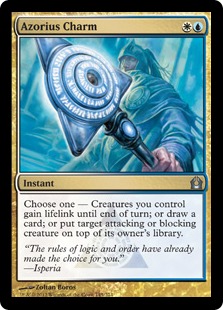 For me, I think it comes down to weighing the alternatives and comparing power levels. Jeskai Control in Modern plays Mana Leak and Path to Exile side by side (which at times can be considered a weakness of the deck) but is born out of necessity to answer creatures like Tarmogoyf and Siege Rhino that dodge Lightning Bolt and Lightning Helix. This can be awkward at times as Path’ing a creature only to “lose” Mana Leak as a follow-up answer can be quite disastrous for the deck. Jeskai usually gets around this by boarding Leak out, or getting to six mana to Leak/Snap/Leak (an inefficient answer, but an answer nonetheless). If Jeskai had a comparable alternative, you can bet that either Leak or Path would get cut, but the options just aren’t there. Patrick Chapin and Guillaume Wafo-Tapa worked together on this sweet list in 2013 that cut Path to Exile for Azorius Charm:
For me, I think it comes down to weighing the alternatives and comparing power levels. Jeskai Control in Modern plays Mana Leak and Path to Exile side by side (which at times can be considered a weakness of the deck) but is born out of necessity to answer creatures like Tarmogoyf and Siege Rhino that dodge Lightning Bolt and Lightning Helix. This can be awkward at times as Path’ing a creature only to “lose” Mana Leak as a follow-up answer can be quite disastrous for the deck. Jeskai usually gets around this by boarding Leak out, or getting to six mana to Leak/Snap/Leak (an inefficient answer, but an answer nonetheless). If Jeskai had a comparable alternative, you can bet that either Leak or Path would get cut, but the options just aren’t there. Patrick Chapin and Guillaume Wafo-Tapa worked together on this sweet list in 2013 that cut Path to Exile for Azorius Charm:
Jeskai Control, by Patrick Chapin and Guillaume Wafo-Tapa
I played with this deck for a few weeks, and Azorius Charm did function as a suitable replacement that was able to work alongside Mana Leak, instead of against it. The fact that this particular build eventually died down and never really caught on leaves me inclined to believe that individual power level is often more important than synergy, but the other side could still be argued as well. For those interested, you can find Chapin’s excellent, previously premium article on this deck (one of my all-time favorites) here.
Jeff Girten: “When sideboarding in Modern, is it better to fight a narrow range of difficult match-ups or bring “good” cards that play in a variety of match-ups but might not put you back to 50-50 in your worst match-ups?”
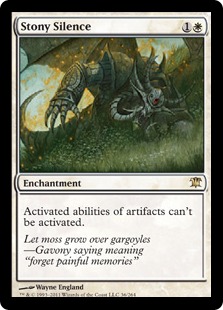 The answer to this question is due more to the state of Modern and the deck you are playing with/decks you expect to face than anything else. In my mind, a classic example of this when deckbuilding is Stony Silence vs. Izzet Staticaster in the UWR sideboard. Stony Silence has a few applications (mainly Affinity, and to a lesser extent Tron and the pretty much extinct UB Tezzeret deck) but is insanely good at what it does. On the other hand, Izzet Staticaster has very broad applications against most decks (mana creatures, Affinity, Infect, BW Tokens, Lingering Souls, Dark Confidant, half the Merfolk deck), but is rarely “lights out” when cast. Modern as a format exists in this weird environment where there are too many decks to prepare for everything, but most decks are very powerful and demand sideboard trumps. One strategy when constructing sideboards is to find the most applicable cards for the widest variety of matchups so you can improve against everything. The other end of the spectrum involves picking the worst four-five matchups, and playing multiple copies of the card/cards that best fight that specific strategy.
The answer to this question is due more to the state of Modern and the deck you are playing with/decks you expect to face than anything else. In my mind, a classic example of this when deckbuilding is Stony Silence vs. Izzet Staticaster in the UWR sideboard. Stony Silence has a few applications (mainly Affinity, and to a lesser extent Tron and the pretty much extinct UB Tezzeret deck) but is insanely good at what it does. On the other hand, Izzet Staticaster has very broad applications against most decks (mana creatures, Affinity, Infect, BW Tokens, Lingering Souls, Dark Confidant, half the Merfolk deck), but is rarely “lights out” when cast. Modern as a format exists in this weird environment where there are too many decks to prepare for everything, but most decks are very powerful and demand sideboard trumps. One strategy when constructing sideboards is to find the most applicable cards for the widest variety of matchups so you can improve against everything. The other end of the spectrum involves picking the worst four-five matchups, and playing multiple copies of the card/cards that best fight that specific strategy.
Of course, you can always incorporate a mixture of both strategies, which is why we often see Stony Silence in almost every deck capable of casting it, as it is an extremely strong answer to Affinity, one of the best and most polarizing decks in Modern. Stony Silence can appear in sideboards as a one of in decks with lots of selection like UWR Control, or as a four-of in decks that need it in their opening seven (Suicide Zoo). The correct answer to the original question is, unfortunately, “it depends”, but the factors that it depends on are clear and relatively simple to evaluate. Modern is a format of matchups and percentages. Decide for yourself if it’s worth a large amount of percentage in one matchup to gain percentage across the board.
Mitternacht asks: “What cards if any from Origins do you expect to see make an impact on Modern? And what decks do you see them going in?”
I don’t think Modern received much love from Magic Origins. In my opinion, the set is an absolute slam-dunk for Standard, but as far as options for Modern go it’s pretty underwhelming. This isn’t relatively bad, as recently the flashy Modern plants have been a little too powerful (Deathrite Shaman, Treasure Cruise), but it does make for some quiet on the homefront as we are evaluating the new cards. A few different archetypes gained some options; Harbinger of the Tides for Merfolk/Blue Control and Jace for Control/Graveyard decks. Day's Undoing and Abbot of Keral Keep are the cards I’m most excited to try out in Modern.
Taylor: “For someone coming back into Modern after a couple years hiatus, which blue based deck would you recommend for a mage with affinity for islands? Also which card on the banlist is most likely to be unbanned, and which card unbanning/banning would make for the most interesting format?”
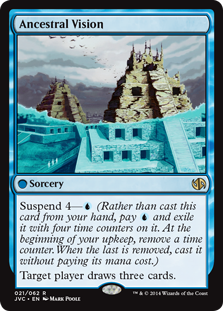 Grixis Control! While Jeskai can offer the most “pure control” experience out of any deck in Modern, I’ve always find Jeskai to be lacking in a few areas that place it firmly in tier 2 in my mind. The ability to turn the corner, play a relatively low land count, maximize mana efficiency and answer threat-for-threat all combine to make Grixis Control a fun, challenging strategy for control lovers in Modern.
Grixis Control! While Jeskai can offer the most “pure control” experience out of any deck in Modern, I’ve always find Jeskai to be lacking in a few areas that place it firmly in tier 2 in my mind. The ability to turn the corner, play a relatively low land count, maximize mana efficiency and answer threat-for-threat all combine to make Grixis Control a fun, challenging strategy for control lovers in Modern.
As for unbannings, I would like to see Ancestral Visions unbanned, but that’s coming from my strong control-bias. It’s not clear that the card is too powerful, and could serve to push blue control firmly into tier 1. It’s possible that Visions’ unbanning would help Twin more than any possible control strategy, as often Twin functions as the control deck in the format, so I definitely see the risks, but a truly powerful control deck would help to reign in the million different flavors of combo running rampant in Modern. I could also see giving Birthing Pod a second chance, with the popularity of Kolaghan's Command as a form of maindeck artifact hate. I believe Pod would not be as powerful as it has been in the past, were it to return.
Anonymous: “Do you think any deck in Modern will be playing Languish, like Grixis or Junk? Also how do you think the NEW planeswalkers will stand up in Standard and Modern?”
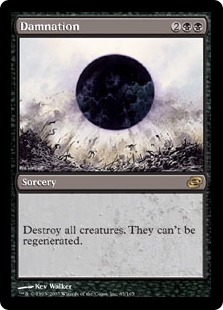 I find it hard to imagine a scenario where I would rather have Languish vs. Damnation. Most of the time, the two will be interchangeable, except for when Damnation is better because Languish only hits x/4’s or less. Against Siege Rhino, Gurmag/Tasigur, creatures that regenerate, creatures pumped by modular, Tarmogoyf and Titans, I would rather have Damnation. I imagine that a deck full of x/5’s could use Languish as a one-sided wrath, but a careful opponent could always save a Lightning Bolt to finish off your creature after it has been shrunken.
I find it hard to imagine a scenario where I would rather have Languish vs. Damnation. Most of the time, the two will be interchangeable, except for when Damnation is better because Languish only hits x/4’s or less. Against Siege Rhino, Gurmag/Tasigur, creatures that regenerate, creatures pumped by modular, Tarmogoyf and Titans, I would rather have Damnation. I imagine that a deck full of x/5’s could use Languish as a one-sided wrath, but a careful opponent could always save a Lightning Bolt to finish off your creature after it has been shrunken.
I imagine that Jace will be Modern playable, as mentioned above, and Liliana could see play in some sort of Mardu or G/B sacrifice deck, though Liliana of the Veil could easily go in either of those decks as well. White aggro strategies have never been very popular in Modern, due to the prevalence of Tarmogoyf and better options in other colors, so I don’t think Gideon will be very strong either. We’ll just have to wait and see!
Simon Bainbridge: “Great article, as another MTG player aspiring to qualify for the Pro Tour one day, do (you) think that streaming could be used for brainstorming sessions with your viewers? As this may fill the void left by not being part of a big team.”
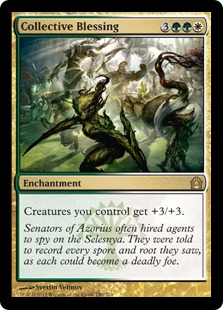 I do think this is possible and much of my testing for Pro Tour: Magic Origins has in fact been done on stream! Streaming is an incredible resource that to this point has been under-utilized for testing purposes in my opinion. There are downsides to this as all information discussed is public, making it difficult to “hoard tech”, but the positives greatly outweigh the negatives in my opinion. Sharing information with viewers, gaining multiple perspectives on every issue, just working and learning together has made me a much better player, and I owe it all to streaming and to my viewers. Here’s to hoping that more people embrace streaming and testing on stream in the future!
I do think this is possible and much of my testing for Pro Tour: Magic Origins has in fact been done on stream! Streaming is an incredible resource that to this point has been under-utilized for testing purposes in my opinion. There are downsides to this as all information discussed is public, making it difficult to “hoard tech”, but the positives greatly outweigh the negatives in my opinion. Sharing information with viewers, gaining multiple perspectives on every issue, just working and learning together has made me a much better player, and I owe it all to streaming and to my viewers. Here’s to hoping that more people embrace streaming and testing on stream in the future!
Grego3: “What is your favorite type of sandwich bread?”
This of course depends entirely on the type of sandwich being consumed. Peanut butter and jelly works best with sourdough or mountain bread, while any type of cold cut sandwich pairs excellently with any sort of cheese/seasoned bread. Asiago cheddar earns bonus points for being literal candy! While not technically sandwiches, focaccia and goat cheese is delicious, especially with crumbled bacon!
Conclusion
Thanks to all the readers/viewers that contributed questions, and thanks to you for reading! Pro Tour Vancouver is nigh upon us, and once I return victorious we can get back to Modern! Perhaps with a new deck or two? Let me know your thoughts/opinions on my thoughts/opinions, and if you missed the first go-round and have a question you’d like to shoot my way, feel free to ask in the comments!
As always, everyone is welcome to stop by my stream any time and say whats up! Twitch.tv/Architect_Gaming. See you there!
Trevor Holmes
The_Architect on MTGO
Twitch.tv/Architect_Gaming
Twitter.com/7he4rchitect


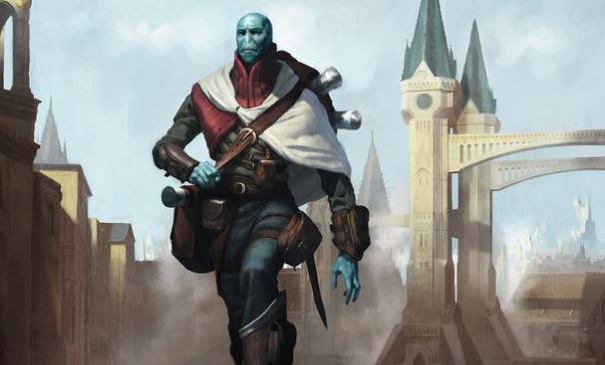


Good read. Found this website via the author’s twitch stream.
Thanks for taking the time. I think I’ll take your Goblins deck out for a spin and see how it does. I have been playing around with Shared Animosity as a “end the game” type of card, but just having more 1-drops might be better.
There are a bunch of different ways to build Goblins! I don’t know which one is “right” but all of them are fun and powerful! Good luck!
You presented some pretty controversial opinions there.
Personally, I believe that sourdough is best for cold cut sandwiches, and does not fit in well with the PBnJ style of sandwich. Also, why would focaccia and goat cheese not be considered a sandwich?
My definition of sandwich does not include open-faced conconctions like bread and cheese or topped bruschetta. I could be way off base though!
Well, according to Dictionary.com, a single slice of bread with toppings is known as an “open sandwich”, which does indeed include the word sandwich. I would probably categorize it as a sandwich variant.
I don’t think Piledriver is good enough to make Goblins a deck in Modern. I played Goblins in legacy for quite a while, it was generally not very good excepting for putting a fast clock on combo. Warchief, Matron, or Ringleader would be far more likely to make the deck viable.
Cheers
I also don’t think it will turn out to be format-changing as some have said. I think Goblins needs a little bit more work, however, and I’ll have my eyes peeled every release for another card or two to ramp up the archetype
I agree with Evan Scott Golden. There will be ofc hype at the beginning, for sure in LGSs someone will try to build any kind of Goblin deck … but without Lackey/Matron/Ringleader/Warchief it will be WAY to hard to pull it off.
Close to no interaction vs Twin, on the play does close to nothing to any T2 Tarmo/Wall of Omens/Kitchen Finks … maaaaybe a chance of being Tier2 …
actually something that makes piledriver good is the fact it gives goblins a way to crash through t2 wall/goyf/tasigur. T1 dude, t2 piledriver, t3 bushwhacker is a 6/2 piledriver. Sure they can block the 1 drop – then your 2 drop has already dealt 6 which in an aggro deck is pretty darn good.
What makes him weak, at least in the “go wide then burn” versions of goblins is he’s like the only legitimate bolt/decay/terminate target in the deck and that’s usually his fate.
I suspect where he’ll shine most is in vial goblins with warren instigator, where you drop chieftans and rabblemasters and instigators into play and presumably the opponent can’t bolt everything.
I’m going to say that you should be using bananas instead of jelly, and honey oat bread instead of sourdough, otherwise I agree with the rest of the article.
Excellent suggestions, will definitely take them into account next time 🙂